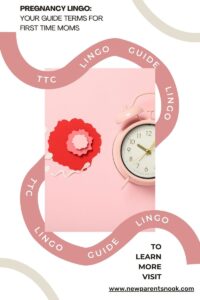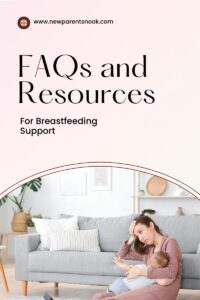Some links on our blog are affiliate links, meaning at no extra cost to you, we may earn a commission if you purchase through them. We participate in the Amazon Affiliate Program, and we recommend products we believe in. Your support helps us keep providing valuable content. Thank you!
What’s Ovulation
Ovulation is a phase in the female menstrual cycle during which a mature egg is released from one of the ovaries into the fallopian tube, where it can be fertilized by a sperm.
This event typically occurs once in each menstrual cycle, about midway through the cycle, although the exact timing can vary from person to person and even from cycle to cycle.
For most women with a typical 28-day cycle, ovulation happens around day 14, counting from the first day of their last menstrual period.
However, cycles can range anywhere from 21 to 35 days in adults and from 21 to 45 days in young teens.
The timing of ovulation can be affected by many factors, including stress, illness, and disruptions to normal routines.
During ovulation, hormonal changes prepare the body for pregnancy. If the egg is not fertilized within about 24 hours after its release, it dissolves or is absorbed by the body.
If fertilization occurs, the egg moves to the uterus and implants itself in the uterine lining, leading to pregnancy.
The period around ovulation is known as the “fertile window,” the time when a woman is most likely to conceive.
Tracking ovulation can be beneficial for those trying to get pregnant or those looking to avoid pregnancy without the use of contraceptives.
How to Track Ovulation
Tracking ovulation can significantly increase your chances of getting pregnant, as it helps you identify the most fertile days of your cycle.
Here’s a guide on how to track ovulation:
- Understand Your Cycle: Most menstrual cycles are between 28 to 32 days long, but they can vary. Ovulation typically occurs about 14 days before the start of your next period.
- Monitor Ovulation Symptoms: Some women experience ovulation symptoms, which can include slight cramping or pain on one side of the pelvis, increased cervical mucus that is clear and stretchy (like egg whites), and heightened senses.
- Use Ovulation Predictor Kits (OPKs): OPKs test your urine for the surge in luteinizing hormone (LH) that occurs 24 to 36 hours before ovulation. Testing daily starting a few days before you expect to ovulate can help you pinpoint your most fertile days.
- Track Basal Body Temperature (BBT): Your body’s resting temperature (BBT) slightly increases after ovulation. By measuring your temperature each morning before getting out of bed and charting it, you can see a pattern over a few months to help predict ovulation.
- Check Cervical Mucus: Changes in cervical mucus can indicate fertility. After your period, you may have dry days, followed by sticky or creamy mucus, leading up to wet, stretchy, clear mucus that indicates high fertility.
- Calendar Method: If your cycle is very regular, you can use the calendar method to predict ovulation by tracking your cycle length over several months. Ovulation usually occurs about 14 days before your next period starts.
- Fertility Apps: Many apps can help track your menstrual cycle, symptoms of ovulation, BBT, and more. These apps can analyze your data to predict your fertile window.
- Consult with a Healthcare Provider: If you find it challenging to track ovulation or if you have irregular cycles, consulting with a healthcare provider can help. They may suggest further methods or tests to help determine your most fertile days.
It’s important to remember that while tracking ovulation can increase your chances of conception, it can take healthy couples several months to conceive.
Patience and consistency with tracking are key.
If you have concerns about your fertility or have been trying to conceive for over a year (or six months if you’re over 35), it’s a good idea to seek advice from a fertility specialist.
Ovulation in each women stages
Ovulation and its patterns can vary significantly throughout a woman’s life, influenced by age, hormonal changes, and different life stages.
Here’s an overview of how ovulation may present itself at various stages:
Puberty to Early Adulthood
- Onset of Menstruation (Menarche): Ovulation begins once girls start having menstrual cycles, typically between ages 12 and 15, but this can range from ages 8 to 16. Initially, cycles may be irregular and not always ovulatory.
- Early Adulthood: In the years following menarche, ovulation becomes more regular for most women, with cycles ranging from 21 to 35 days. However, some may still experience irregularities due to stress, lifestyle, or medical conditions.
Reproductive Years
- 20s to Early 30s: This period often features the most regular ovulatory cycles, with the highest fertility rates. Women may find it easier to track ovulation and predict their fertile windows during these years.
- Late 30s: Fertility begins to decline, and ovulation may become less predictable. The quality and quantity of a woman’s eggs decrease, which can affect the chances of conception.
Perimenopause and Menopause
- Perimenopause (Typically Mid to Late 40s): Ovulation becomes irregular again due to hormonal fluctuations as the body transitions toward menopause. Women may experience shorter or longer cycles, skipped periods, or other symptoms like hot flashes.
- Menopause (Average Age 51 in the U.S.): Ovulation ends once a woman reaches menopause, defined as 12 consecutive months without a menstrual period. The ovaries no longer release eggs, and natural conception is no longer possible.
Factors Affecting Ovulation at Each Stage
Throughout these stages, various factors can influence ovulation, including:
- Health Conditions: Polycystic ovary syndrome (PCOS), thyroid disorders, and other health issues can impact ovulation.
- Lifestyle Factors: Weight changes, stress, and exercise levels can affect menstrual regularity and ovulation.
- Contraceptives: Hormonal birth control methods suppress ovulation. Normal ovulatory cycles usually resume after stopping these contraceptives, but there can be a delay in regaining fertility.
Understanding these stages and how ovulation may change can help women make informed decisions about family planning, contraception, and overall reproductive health.
If concerns about ovulation or fertility arise, consulting a healthcare provider is recommended for personalized advice and potential treatments.

This Image embodies an astral, ethereal, and dreamy interpretation of a fertility goddess, where she is enveloped in a celestial ambiance. This goddess floats in an otherworldly space, surrounded by soft nebulae, twinkling stars, and gentle cosmic swirls, symbolizing her deep connection to the cosmos and the dreamlike essence of creation.







